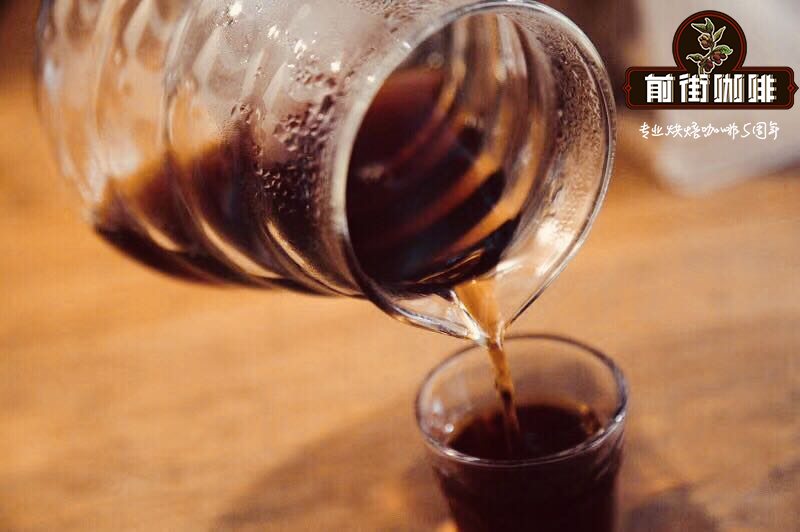Espresso powder filling technique espresso filling method espresso filling procedure

Professional coffee knowledge exchange more coffee bean information please follow the coffee workshop (Wechat official account cafe_style)
If you want to consistently make a good espresso, you need to have an excellent tamping. This video tutorial will serve as a getting started guide. Follow the steps below to practice. Through practice, your espresso will get better and better. Good condition and stability are your goals. Let's get started.
You need an espresso, a crusher and a mobile filter. Many espresso machines are equipped with plastic tamping machines. Don't use those. Find a suitable weighting rammer. Once you have found the correct size tamper, you need to decide that you want a flat or convex bottom. If you need help deciding, see the Resources section at the end of this tutorial.
In our example, we used an espresso tamper. This is optional. You can also use any clean surface.
Espresso-tamping start
1. Make sure the filter basket is clean and dry.
You will rinse and wipe the lens between the clean portafilter. Over time, you will want to do a more extensive cleaning, soaking in a special cleaning such as Puro Caff basket and portafilter.
Coffee packing
2. Add espresso powder to the filter basket
Espresso can be ground directly into the filter or poured from another container. One stitch is about 7 grams, two stitches is about 14 grams, and three stitches is about 21 grams. There is a basket for every size. Double baskets are the most common. These weights are a starting point. You can try to "increase the dose", that is, put a few more grams in the basket.
A very good (usually expensive) coffee grinder a good enough espresso will have a long way to go in terms of your espresso shooting quality and consistency. The three grinders that specialize in espresso are Baratza Virtuoso, Rancilio Rocky and Mazzer Mini.
When pouring coffee into the basket, the goal is to form a uniform ground. In the photo below, you can see espresso piled up above the base. In this way, when the coffee grounds are flattened and compacted, we will have enough coffee.
Add espresso to the filter pot
3. Stir the espresso with your fingers
Before mashing, put your finger on the top of the door filter to make the bullet even.
A smooth espresso
If there is any residue on the edge, brush them aside.
Even coffee.
4. Spike
The goal of tamping is to evenly extract teeth at a pressure of about 30 pounds. You can use the scale in the bathroom to measure how much weight you put in the packing. More importantly, you need to form a steady pressure in your tamping, rather than always reaching 30 pounds. Your arms should be straight so that the hammer can touch the coffee bed evenly.
Prepare to tamp
Even if the pressure is packed
5. Polish the lens (optional
At this point, you can rotate and tamper. This is called polishing and is an optional step. Some people say it helps tamp at night, while others say it's cosmetics and it's not necessary. Now there are even special "smart" polishing machines for sale on eBay, and some people think these polishers work better at night.
Horizontal coffee tamping
Complete tamping
okay. Now that you have an evenly rammed portafilter, you can start brewing.
The last sentence
Now that you have successfully mashed an espresso, your goal is to mash it all the time. Through practice, you will be able to repeat these steps better and better over time. Use the same tamping technique so that when you are working on a new kind of coffee, there is one less variable.
There is another theme that is not covered, and that is trade-offs. Once you have mastered your tamping, you can start experimenting with more precise doses. Put the filter on the kitchen scale and set it to zero before adding medicine, and you can get the exact number of grams. When you make espresso, giving it by weight rather than volume can give you more repeatable results.
END
Important Notice :
前街咖啡 FrontStreet Coffee has moved to new addredd:
FrontStreet Coffee Address: 315,Donghua East Road,GuangZhou
Tel:020 38364473
- Prev

The correct use of Bonavita filter cup is the coffee made by Bonavita filter cup good?
Professional coffee knowledge exchange more information about coffee beans Please follow the coffee workshop (Wechat official account cafe_style) first of all, deposits. In order to reduce the coffee grounds, I got into the habit of not pouring all the coffee into the cup and never taking the last few sips. But occasionally I forget that the last sip of coffee is bitter. This is not a good way to finish your coffee. The first of the French media
- Next

Coffee roasting knowledge sharing, roasting will produce volatile and non-volatile compounds
Professional coffee knowledge exchange more coffee bean information Please pay attention to the coffee workshop (Wechat official account cafe_style) roasting will produce volatile and non-volatile compounds, generally speaking, volatile compounds are aroma, non-volatile compounds are flavor. Volatile compounds are organic chemicals with high vapor pressure at room temperature, many of which are in degradation.
Related
- Beginners will see the "Coffee pull flower" guide!
- What is the difference between ice blog purified milk and ordinary milk coffee?
- Why is the Philippines the largest producer of crops in Liberia?
- For coffee extraction, should the fine powder be retained?
- How does extracted espresso fill pressed powder? How much strength does it take to press the powder?
- How to make jasmine cold extract coffee? Is the jasmine + latte good?
- Will this little toy really make the coffee taste better? How does Lily Drip affect coffee extraction?
- Will the action of slapping the filter cup also affect coffee extraction?
- What's the difference between powder-to-water ratio and powder-to-liquid ratio?
- What is the Ethiopian local species? What does it have to do with Heirloom native species?

